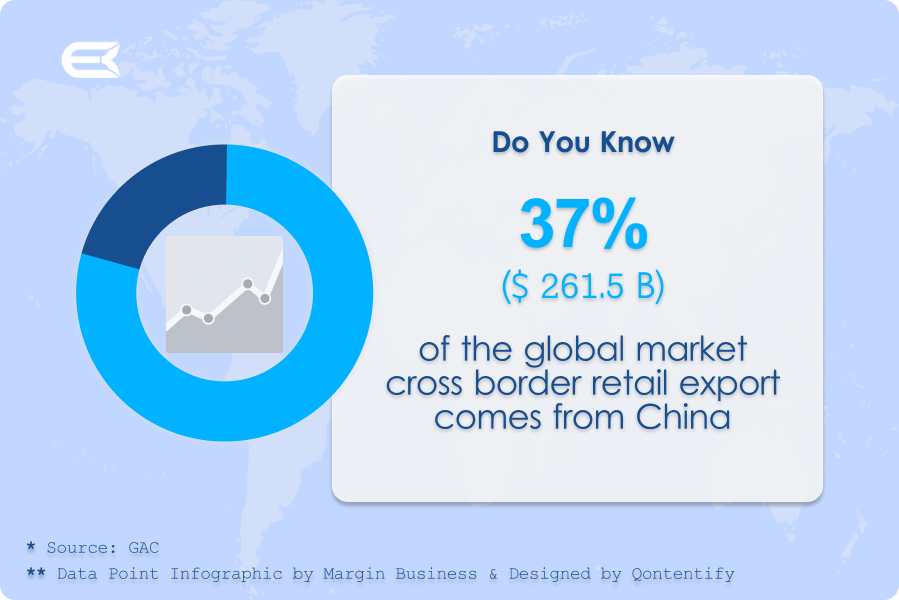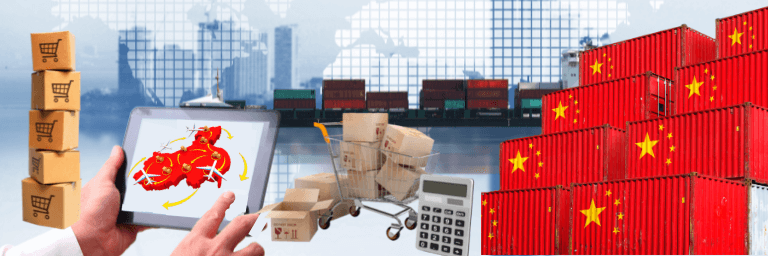Table of Contents
China’s cross-border e-commerce bucked the global trade slowdown caused by the COVID-19 pandemic and witnessed robust growth in recent years, becoming an important force in stabilizing the country’s foreign trade value.
Cross Border Retail Volume
The development of cross-border e-commerce has attracted the close attention of the community.

Last year, the cross-border e-commerce trade volume reached 1.69 trillion yuan (261.5 billion dollars), a year-on-year increase of 31.1%, while e-commerce exports were up 40.1 percent, according to China’s General Administration of Customs (GAC).
China government pays high attention to the future development of cross-border e-commerce, and actively guides enterprises to participate in cross-border e-commerce. Cross-border e-commerce retail exports account for 37% of the global market share in China.
Catalyzed by the pandemic, the development of cross-border e-commerce in China plays a role as a rising-star industry these days. China relies on its unique advantages of strong manufacturing capacity, gradually began to transform from selling goods to brand development. “Made in China” is no longer a synonym for poor quality.

The rapid development of cross-border trade is inseparable from international e-commerce marketplaces, and the development of marketplaces third-party sellers, and China has the most matured cross-border e-commerce third-party sellers who have a stronger advantage for good quality products with low prices.
On the other hand, Chinese sellers, need more international marketplaces and service provider partners to empower their cross-border e-commerce businesses.
YOGUO - Cross-Border Marketplace
YUGUO, previous brand Cifnews, a DTC cross-border industrial service marketplace in China, aims to help Chinese brands to go overseas. It’s the largest China cross-border traffic platform with 1.5mil registered users-mostly matured Amazon third-party sellers, 3.5 monthly UV, and 9.5mil monthly PV for its published content.
The resources on YUGUO platform today include:
🚀 Marketplaces 80+: to realize massive branding, sellers recruitment, sellers training for better GMV etc.
🚀 Service provider 500+: including logistic, VAT, ERP, marketing services, these brands can do branding and leads generation with YUGUO service.
🚀 1.5 mils registered cross-border sellers (also YUGUO users): YUGUO can offer various services they may need for their cross-border business: marketplace onboarding, service providers connection, product selection, and training etc.
🚀 Manufacturers 20,000+: connect them with sellers and new opportunities like B2B marketplaces or transform to cross-border sellers.
YUGUO has the capability to plan brand summits for well-known cross-border companies such as Amazon, Walmart, Google, etc.
The core value of these summits is gathering abundant manufacturers and sellers together, for service providers and marketplaces to do brand exposure and clients development.
Cross-border e-commerce is about to enter the best era. In the face of this historic opportunity, it’s time for you to explore China market and to take your business to another level!

>>>If you are interested in Chinese market, please feel free to let us know, we shall help you connected with YUGUO team. Happy Chinese New Year!
FAQs
By 2020, China’s revenue was $ 2.3 trillion, representing more than half of the global e-commerce market of $ 4.3 trillion. Its retail e-commerce market has been the largest in the world since 2013. Its sales have grown 34 times in ten years by 2020, compared to nine times global growth.
Alibaba is the best e-commerce platform for suppliers and retailers looking for ways to distribute their products and services to international customers. This is a b2b e-commerce platform that strives to meet the needs of sellers and buyers by offering many of the tools needed for their stores.
There are many reason of China’s e-commerce success. The broad logistics ecosystem supports the growth of China’s e-commerce market. Chinese e-commerce giants Alibaba and JD.com have been successful in part due to the development of highly efficient order processing systems and networks.




